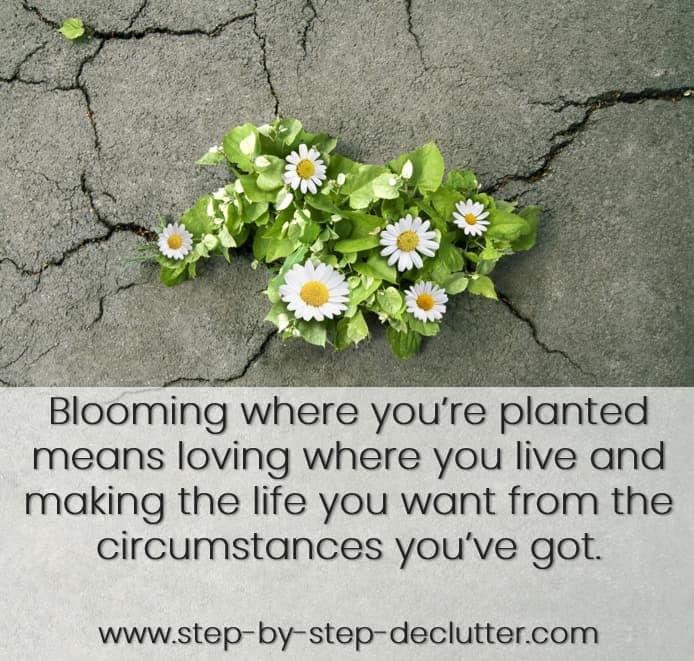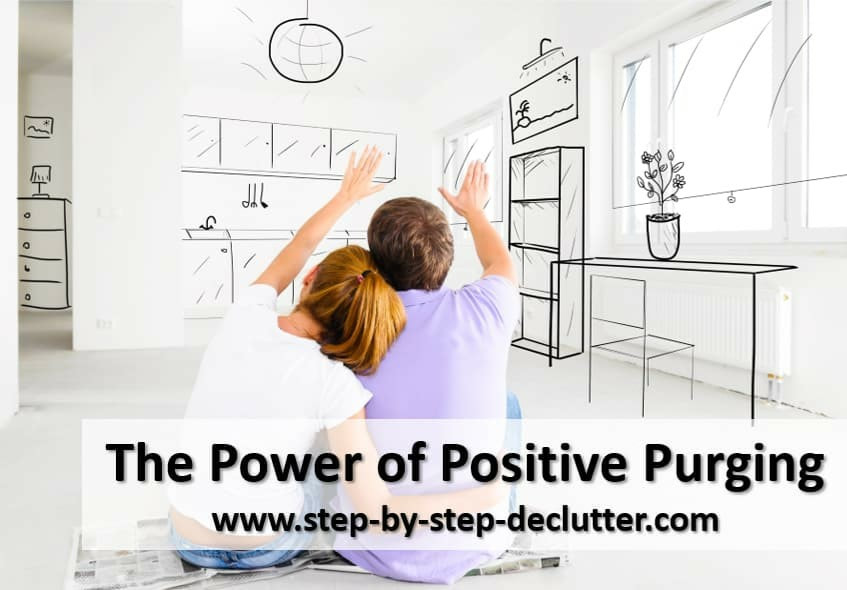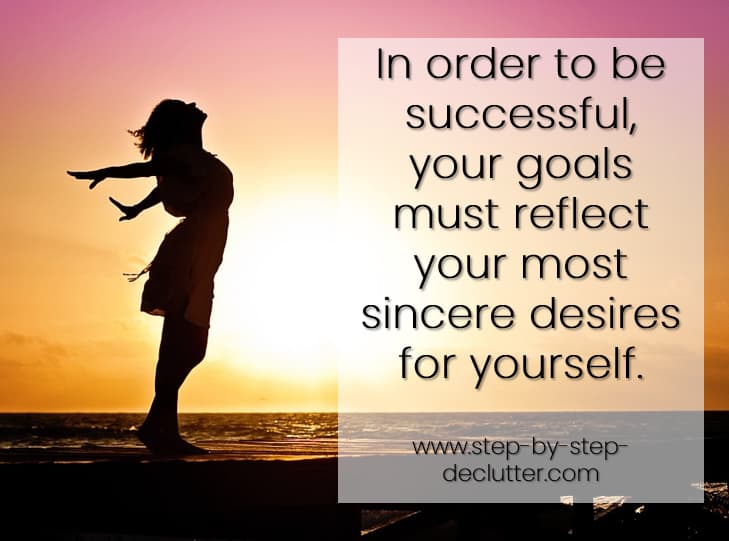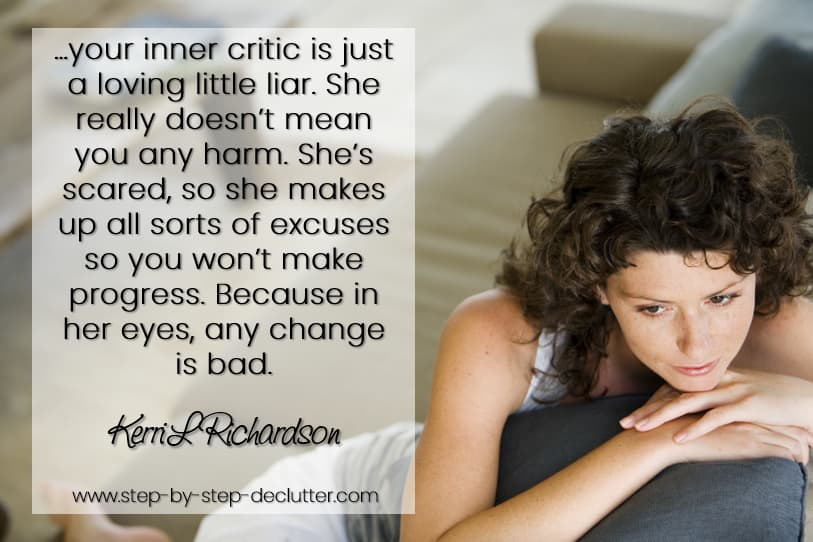|
|
|
Purging, decluttering, downsizing – these are all different ways of referring to the process of pairing down one’s belongings. Whatever you call it, this process is often thought of in negative terms – what must I get rid of? The problem is most people like their stuff and are therefore reluctant to part with it, even if they recognize they have way too much. Asking “What must I get rid of?” puts a negative emphasis on the decluttering process. This is unfortunate because there are many positive effects that come from reducing the excess in our lives. Reframing this and other questions associated with purging or decluttering can make the process simpler and less stressful.
The purpose of stuff is to make our lives easier and more enjoyable. Every thing serves a function. In some cases, the function is simply to make someone smile. Often, however, we become weighed down by our things, and instead of adding to our well-being, they detract from it. To truly understand what it is you want from your stuff, you need to look deeper at what you want out of life. If your clutter is causing you stress, then you’re not living your ideal life. What does that life look like? If your home and life were clutter-free, what would you do with your new-found freedom? What would your environment look like? How would you spend your time? How would your space feel? The answers to these questions will help you develop a vision for your space and your stuff as a support structure for your ideal life.
Once you have a vision of your ideal life, you can put that vision to work to help you create an environment wherein you can thrive. It can be helpful to generate mental and visual imagery to inspire, energize, and motivate you throughout the decluttering process. Start by writing a vision statement for your ideal life and/or space. If you’re having difficulty articulating your vision, try brainstorming words that characterize what you’re striving for. These could be words that describe the space itself such as comfortable, classy, spacious, clutter-free, cozy, peaceful, homey, inviting, timeless, open, kid-friendly, rustic, personal, etc. You can also list words or phrases that illustrate how you want to live in or use the space such as relax, unwind, meditate, entertain, create, play, read, watch movies, or exercise, to name a few. Another way to capture your vision is through images. Look for pictures on the internet or in magazines of interiors or activities that epitomize your desires. Print them or cut them out and use them to create a vision board. Place your board where you will see it frequently. It’s important that your vision board is readily visible without having to open a book or log on to your computer. It needs to be out on display to be truly effective as a source of inspiration. Please note that the goal here is to embrace a realistic vision for the space you live in, not a 4,000 square foot dream home with an ocean view, game room, sauna, and bocce ball court (unless, of course, that accurately describes your current home). Whether you live in a tiny one-bedroom apartment or a rambling 1960’s ranch-style home in need of renovation, focus on idealizing your space. Keep the dream home as a long-term goal, but make a short-term goal of loving where you live now. Among military families this is referred to as ‘blooming where you’re planted’.
This blog post began with a question – What must I get rid of? When your focus is on positive purging, you ask different questions. Instead of fixating on what you have to part with, your emphasis shifts to what you’re going to keep. Your vision statement becomes the litmus test for determining what things deserve a place in your home. Instead of asking “What must I get rid of?”, consider asking questions such as:
Focus on finding your treasures, those things that speak to your heart and support your needs and desires for your home and your lifestyle. Positive purging is mindful purging – purging with an inspired purpose. When you purge positively, you don’t have to think about how much you spent on an item, or whether it might be useful someday, or who might be offended if you get rid of something. Instead, you concentrate on the lifestyle you want to foster.
Some stuff is junk and as such it belongs in the trash, but many items have value, even if they no longer serve a purpose for us personally. This is, of course, one reason people struggle to get rid of things they really don’t want or need. Positive purging has two facets. The first is focusing on what you want and need to keep to meet your own needs and desires. The second is finding a happy and appropriate home for those things you’re letting go. This can be achieved in a variety of ways. Many people hold onto empty containers thinking they may come in handy. These include glass jars, plastic containers with lids or shaker tops, empty pill bottles or film canisters, and cardboard boxes in all shapes and sizes. If you do not have an immediate use for these items, get rid of them. If at all possible, please recycle them. Other items still in serviceable condition can be given to others or sold. Knowing your unneeded items are going to a good home can make parting easier. You can feel good about helping the environment and/or helping those whose circumstances are less fortunate than your own. Taking a positive approach to purging can turn a painful process into an exciting quest for peace of mind, personal satisfaction, and overall well-being.
If you found this page helpful, please share it with others you know who may be struggling with decluttering. Please leave me a comment as well in the section below. I would love to hear from you!
10 Comments
Lessons in Setting and Successfully Achieving GoalsGoogle defines the word resolution as follows: “a firm decision to do or not to do something”. Every January millions of people around the world make resolutions in a well-intentioned attempt to recommit themselves to achieving their goals. At first glance, the new year seems like an opportune time to reinvent oneself, yet so many of us struggle to see the process through to a successful conclusion. I confess, I am among those who routinely make well-intentioned commitments to improve myself each year. Unfortunately, I am also among the millions whose enthusiasm for change quickly wanes with the passing days and weeks. This year, instead of starting strong and petering out, I have struggled even to get moving in the right direction. Already February is nearly behind us and I am really only beginning to make progress on my resolutions. As I have pondered the reasons for my sluggish attempts at personal betterment, I have discovered a few truths (and created some resources) that I have found useful in motivating and inspiring me to stick with it. I hope they will motivate and inspire you as well.
We often get this backwards. We assume that we must motivate ourselves to take action. In reality, motivation is a byproduct of success. As we experience success, we feel motivated to continue. The real key to success is action. We just have to do it, whatever it is. Taking action will yield results. Those results will make us feel good. The more results we achieve, the more motivated we become to continue our efforts.
My husband is in great shape. He has been our entire marriage. He works hard to stay that way. Despite all his experience and accomplishments, I have had little success trying to implement his ideas of a good workout regimen for me. This is because no one, no matter how well-intentioned, can determine your goals for you. Others can give advice and offer support, but to have any hope of succeeding, goals have to come from within. They must reflect your most sincere desires for yourself.
Most of us are intimately familiar with that little voice inside our heads that regularly reminds us of the myriad ways in which we fall short of our own expectations and potential. It’s our inner critic, and its main purpose is to keep us safely and securely within our comfort zone. Kerri L. Richardson explains it this way in her book What Your Clutter is Trying to Tell You (affiliate link):
Overcoming the negative influence of the inner critic is a two-step process. First you have to determine what it is about your goal that intimidates you. What are you afraid of? Next, you have to convince the inner critic that the benefits outweigh the risks. One way to achieve this is by breaking your goal down into manageable parts that you can easily wrap your head around.
As humans we value immediate rewards. The problem is, most goals require long term effort in order to experience the full payoff. To stay motivated until the goal is achieved, it’s helpful to manufacture rewards along the way. This can be done in a number of ways. One method is to establish milestones throughout the process and reward yourself when each milestone is achieved. Another approach is to pair things you enjoy with tasks you dread, like listening to your favorite music, audio book, or podcast while exercising. James Clear, author of Atomic Habits (affiliate link), explains the process of getting your Present Self to do the work your Future Self needs you to do in his article “Procrastination: A Scientific Guide on How to Stop Procrastinating”.
I recently took a business class in which we chose ‘action partners’ and made weekly commitments. An action partner is someone who follows up with you to check on your progress and offers support and encouragement. In this case our action partners were classmates, and we were all working on similar goals. Outside the classroom, the principle can still be applied with friends or family members who may or may not be working on similar goals. I loved having an action partner. It was fun rejoicing together over our accomplishments, and it was nice to know that someone was rooting for my success. Each week as part of the commitment process, we would sign a page in our books on which our commitments were written, and our action partners would sign the page as well. Something about signing my name made the process more meaningful. I felt accountable and invested. I came to realize through this process that there is real power in making and keeping commitments. And the person who most needs your commitment is you. If you're not committed to yourself and your own well-being, you're really no good to anyone else. One of the printables offered below reflects this truth. It's called Commitments to Myself, and it's purpose is to help me (and hopefully you) look at goals in a new way - as a personal commitment to move closer to becoming the best version of myself.
When setting goals, it’s usually pretty easy to determine what it is you want to achieve. Equally important, though, is the why behind your desire to make a change in your life, learn a new skill, or replace a bad habit with a good one. Your "why" is your foundation. It’s the basis for your motivation, and it can fuel your determination to continue when you feel discouraged. Another critical consideration with respect to goal setting is the how – how will you go about achieving your goal? Most goals require multiple steps over a period of time. Determining how you will break them down will help make your goal manageable and allow you to measure your progress over time. A final point worth pondering is how you will respond to discouragement, disappointment, or burnout. I have found it useful to determine in advance a statement of affirmation that I can use to remind myself of my why when my enthusiasm starts to dwindle. There is space allotted on my Goal Setting Worksheet printable (available below) for recording an affirmation statement.
As I mentioned at the beginning of this post, I've developed a few resources to help me create and stick to my goals. Click on the image below to gain access to my free printables library which includes these, as well as many other pages, for download.
If you found this page helpful, please share it on social media. Please leave me a quick comment as well in the section below. I'd love to hear from you!
|
Archives
November 2022
Categories
All
|
Proudly powered by Weebly














 RSS Feed
RSS Feed